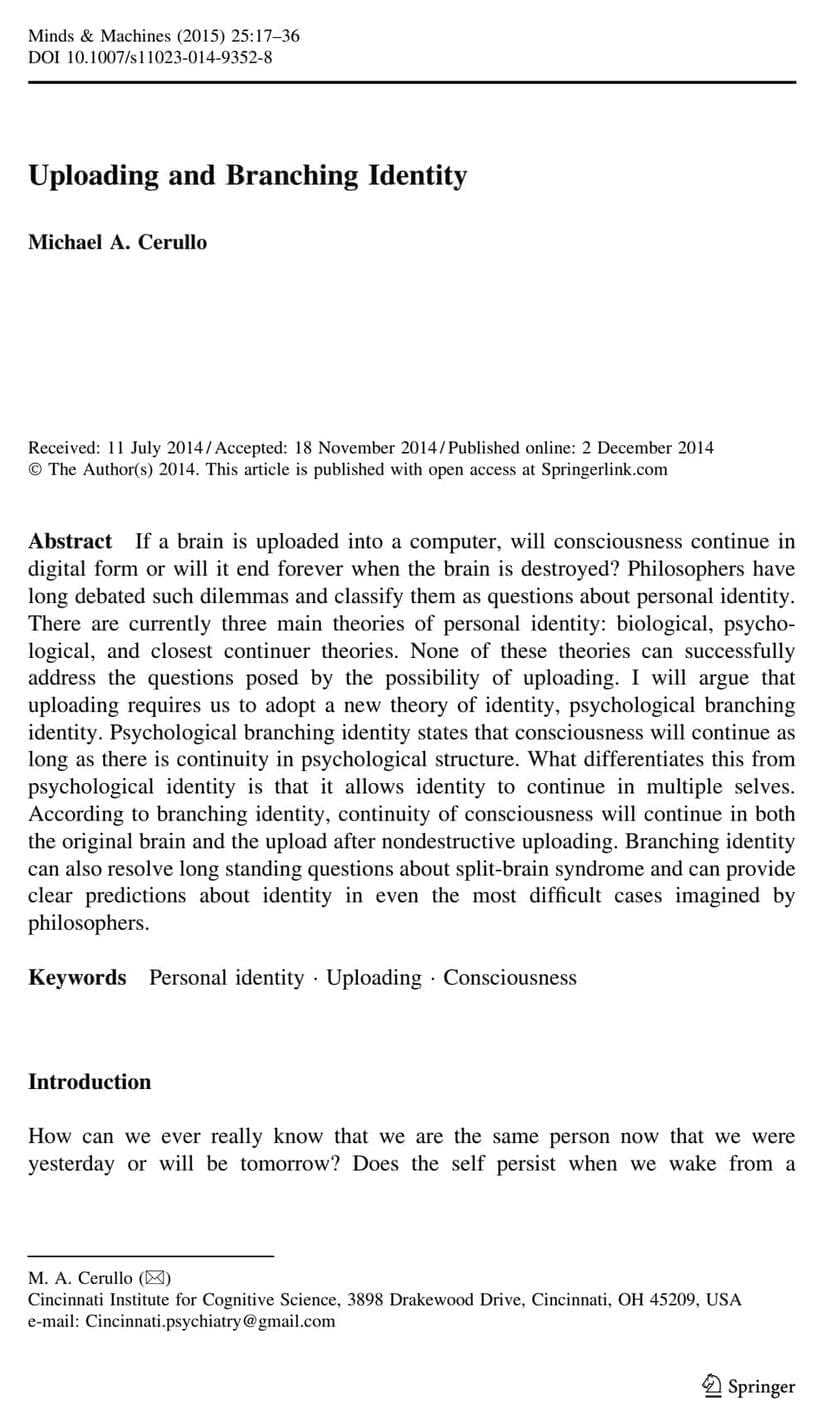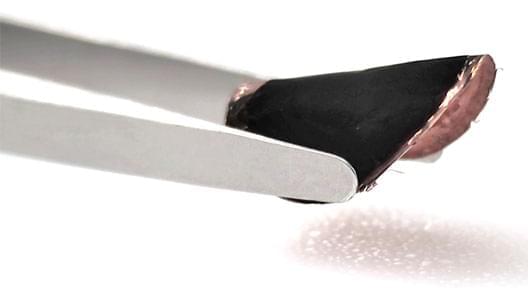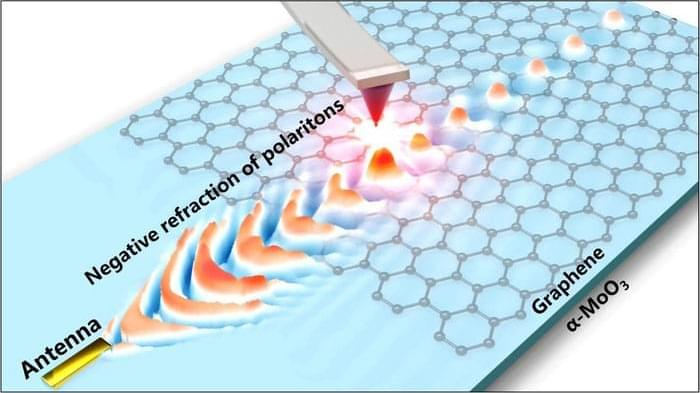When people talk about the problems of aging, they most often focus on aches and pains, chronic conditions like heart failure or diabetes, and neurological disorders like Parkinson’s or Alzheimer’s. Often overlooked is the extremely common problem of loneliness.
The Methuselah Foundation is a non-profit medical charity focused on extending the healthy human lifespan by making 90 the new 50 by 2030. Our goal is to accelerate results in the longevity field, as well as the biotechnology, regenerative medicine, life sciences sectors. We incubate and sponsor mission-relevant ventures, fund research, and support projects and prizes.
Learn more about a new brain health study that suggests socioeconomic factors and mental health may be among the dementia risk factors we need to keep top of mind.
UK-based Hex wanted to visit friends in the U.S. but was barred from entering due to her virtual work.
S11023-014‑9352-8.Pdf
Posted in futurism
Uploading and branching identity by Michael Carrulo.
Dropbox is a free service that lets you bring your photos, docs, and videos anywhere and share them easily. Never email yourself a file again!
What if, instead of using X-rays or ultrasound, we could use touch to image the insides of human bodies and electronic devices? In a study publishing in the journal Cell Reports Physical Science (“A smart bionic finger for subsurface tactile-tomography”), researchers present a bionic finger that can create 3D maps of the internal shapes and textures of complex objects by touching their exterior surface.
“We were inspired by human fingers, which have the most sensitive tactile perception that we know of,” says senior author Jianyi Luo, a professor at Wuyi University. “For example, when we touch our own bodies with our fingers, we can sense not only the texture of our skin, but also the outline of the bone beneath it.”
“Our bionic finger goes beyond previous artificial sensors that were only capable of recognizing and discriminating between external shapes, surface textures, and hardness,” says co-author Zhiming Chen, a lecturer at Wuyi University.
Messier 104 (The Sombrero Galaxy)
Posted in space
Hubble easily resolves the Sombrero galaxy’s rich system of globular clusters, estimated to be nearly 2,000 in number — 10 times more than the number of globular clusters in our Milky Way.
York skeletal remains that belonged to a medieval anchoress were found to have an unusual crouching position. Live Science reports that further analyses revealed that the woman died of arthritis and syphilis.
Mysterious York Skeletal Remains
Such findings raised queries regarding how the religious hermit could have gotten an STI (Sexually Transmitted Infection). Nevertheless, they could explain the woman’s peculiar position.
As devices get smaller and more powerful, the risk of them overheating and burning out increases substantially. Despite advancements in cooling solutions, the interface between an electronic chip and its cooling system has remained a barrier for thermal transport due to the materials’ intrinsic roughness.
Material after graphene coating. (Image: CMU)
Sheng Shen, a professor of mechanical engineering Opens in new window, has fabricated a flexible, powerful, and highly-reliable material to efficiently fill the gap (ACS Nano, “3D Graphene-Nanowire “Sandwich” Thermal Interface with Ultralow Resistance and Stiffness”).
A new study led by DAI Qing’s team from the National Center for Nanoscience and Technology (NCNST) of the Chinese Academy of Sciences (CAS) and Javier Abajo from the Institute of Photonic Sciences (ICFO) in Spain has shown a gate-tunable nanoscale negative refraction of polaritons in the mid-infrared range through a van der Waals heterostructure of graphene and molybdenum trioxide. The atomically thick heterostructures weaken scattering losses at the interface while enabling an actively tunable transition of normal to negative refraction through electrical gating.
The work was published in Science (“Gate-tunable negative refraction of mid-infrared polaritons”).
Basic principle of the “polariton transistor”. The van der Waals heterostructure is constructed by decorating graphene on the molybdenum trioxide, and the antenna stimulates the polariton to transmit through the interface to form negative refraction. (Image: DAI Qing et al.)









